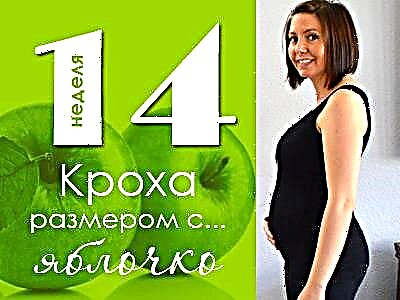
By the age of six months, the nutrition that the baby receives in the form of mother's milk or an adapted formula becomes insufficient for all the needs of the grown toddler. The time comes to get acquainted with a new food, that is, with complementary foods. Let's take a look at what new foods a six month old baby can try.
What products can you already eat?
Six months is the time for the first feeding of an infant who has previously been exclusively breastfed. The gastrointestinal tract of the toddler is already ready to taste vegetables, cereals and fruits.
Which product to introduce first, parents should decide in conjunction with the pediatrician. Babies who are poorly gaining weight are advised to start with cereals, and well-fed babies with frequent constipation should start complementary foods with vegetable dishes. Review the Breastfeeding Complementary Feed Input Chart.

Consider the following features:
- Vegetables are given in the form of mashed potatoes from one type of vegetables, offering the crumbs for the first time 5 grams. Then the portion is carefully increased to the age-specific dosage of 100 grams per day. When the baby is used to one vegetable, they begin to offer him the second type of vegetables, again starting at 5 grams.
- Porridges at 6 months are prepared without milk, but can be diluted with human milk or a mixture. The first portion of porridge will be 10 grams, after which the total amount of porridge eaten per day is brought to 150 grams.
- Babies who are accustomed to vegetables and cereals are offered fruits. They are also given in the form of a one-component puree - first 5 grams for the first sample, and then every day more up to a daily dose of 30 grams.
There are also many adherents of using fermented milk products for the first feeding. Among them is the famous pediatrician Komarovsky. A popular doctor recommends giving a healthy 6-month-old baby kefir. The product is offered in the second feeding, gradually increasing the portion to 160 ml. From the fifth day of the introduction of kefir into the baby's diet, Komarovsky advises starting to add cottage cheese to it. His daily portion for a 6-month-old baby is 30 g. Read more about the introduction of complementary foods according to Komarovsky in another article.
In situations when the mother has little breast milk or it is not possible to feed the baby with an adapted mixture, acquaintance with vegetables and cereals is postponed to an earlier period - 4-5 months (we advise you to adhere to our table of introduction of complementary foods for bottle feeding). At an earlier age, complementary foods are also started for artificial children. By the age of 6 months, such children have long tasted fruit purees and cereals (dairy-free), as well as vegetable purees with vegetable oil. At 6 months of age, they only increase the portions of these dishes and begin to add butter.

Complementary feeding rules
- You should start with one product, and each next new product can be introduced only after getting used to it (lasts an average of 3-5 days) and the absence of allergic reactions.
- You cannot give two products at the same time that the child was not familiar with before, since when a reaction appears, you will not be able to understand which product provoked it.
- The volume of the product for the first sample is half a teaspoon.
- The new product should be washed down with milk from mother's breast or formula.
- It is worth giving a new dish in the morning feeding, then by the end of the day it will become noticeable whether the child tolerates it normally.
- It is recommended to keep a diary in which you note all the foods eaten by the baby.
- Acquaintance with new food should be postponed if the baby is sick, as well as during vaccination (three days before and several days after vaccination).
- If the crumb refuses to try a new dish, do not insist.
- In a situation where the product has caused an allergy or other negative reaction, new dishes are not given until the painful manifestations disappear.

How much should a baby eat?
The total amount of food per day for a six month old baby is calculated based on his body weight data. Children over 6 months old need to eat food in the amount of 1/8 to 1/9 of their weight per day.
Recommendations for complementary foods:
Diet
At the age of six months, a child has 5 meals a day on average, and the breaks between them are from three and a half to four hours.

Sample menu
For a child who was only breastfed until 6 months old, at 6 months after the introduction of new products, the menu will look like this:
For a baby whose mother, due to a lack of milk, began to feed from 4-5 months, the daily menu will be as follows:
In a child who was fed with formula, the diet at 6 months is as follows:
Tips
- Any new product should be given prior to feeding.
- A 6 month old baby should use a sieve, mixer or blender to cook food, as it is important to achieve a uniform structure. A very thick dish is diluted with milk (mother's or a mixture), vegetable broth or boiled water.
Among vegetables, zucchini, cauliflower, potatoes and turnips are considered the most suitable for the first feeding. The first cereals that a six-month-old toddler can try are rice, corn and buckwheat. From fruits, a child of this age can be given apples, pears and bananas.
Many parents think about the introduction of vitamins for babies. Whether it is worth doing this, read our article.




